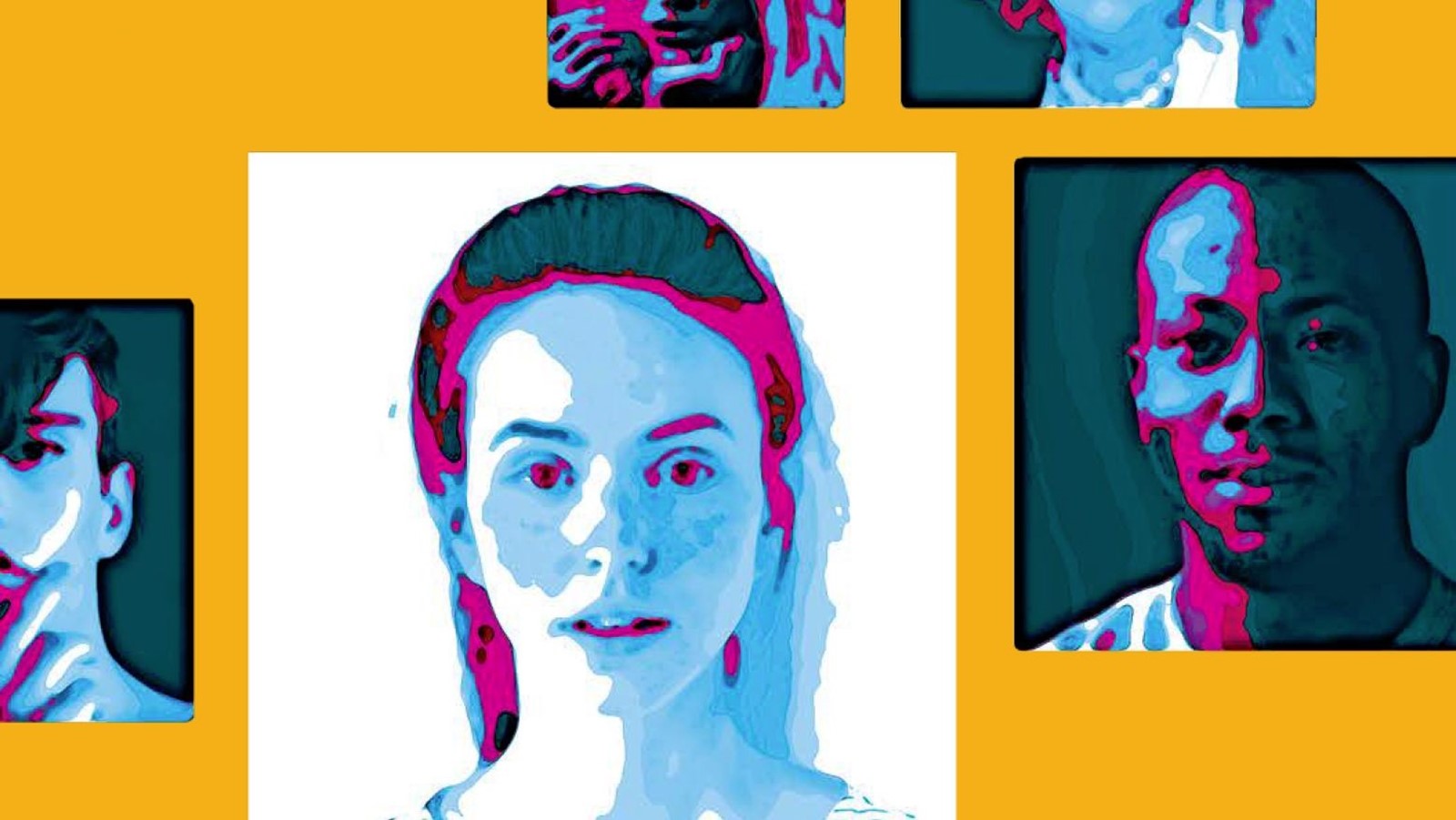The majority of people will never be challenged by their gender identity, or how they express it. They may explore their presentation but are likely to be comfortable with the expected binary model of male/female, man/woman, and experience it as perfectly acceptable. Heading into 2018, however, the number of people questioning their gender identity, and how they express it, is far greater than anyone could have predicted.
I will give an overview of the historical context behind this phenomenon, how clinical and medical treatment regarding gender reassignment has evolved and, finally, a suggested way forward, including the role of counselling and psychotherapy.
Historical context
People have changed their gender presentation since the beginning of time. Around 1480 BC, Hatshepsut was one of Egypt’s most successful Pharaohs, but no word existed for a female ruler, so she used the male title. She wore men’s clothing and used both male and female pronouns. Joan of Arc, when sentenced to death, pleaded to be allowed to wear the garb of a man. History is littered with examples of women who took a male role in order to pursue a calling or career, and we’ll never know for certain what the motivation was in these examples. In the modern era, Adam Hart had a mastectomy and hysterectomy in 1918. Michael Dillon appears to have been one of the first transmen to undergo a phalloplasty when Dr Harold Gillies operated on him on shortly after World War Two. Another important figure was Reed Erickson, who sought medical intervention with Harry Benjamin in the 1960s.
Early examples of transwomen date back to ancient Greece and ancient Rome. In the modern era, we can cite pioneers such as Lucy Hicks-Anderson, born in America in 1886, and the ‘Danish girl’, Lilli Elbe, in the 1920s. Roberta Cowell, Christine Jorgensen and April Ashley in the 1950s and 1960s were all individuals assigned male at birth, who sought surgery to reassign their genitalia and were sensationalised by the media.
When we look at current treatment methods, we find their roots with Harry Benjamin, who, along with clinicians such as John Money, Robert Stoller and others, worked with trans people in the 1950s and 1960s in the US. It’s probably true to say that Benjamin is the most influential figure in terms of clinical treatment in this field. He wrote The Transsexual Phenomenon in 1966 and credited pioneers such as Christine Jorgensen as being pivotal to his work and understanding of the phenomenon, as he saw it. His Standards of Care have been adapted over the years and to this day form the bedrock of clinical treatment in the form of the World Professional Association for Transgender Health (WPATH) guidelines.
One of Benjamin’s team reportedly said, ‘If we can’t change the mind, surgery must change the body’, thus laying the foundation for modern sex reassignment surgery. In short, to obtain hormone therapy and/or surgery, the patient would have to prove they totally identified with, and were totally committed to, living in the opposite binary gender role for the rest of their lives. They had to illustrate their beliefs about their gender had been deeply embedded and persistent for as long as they could remember. They then had to convince the clinicians that they could only attain peace of mind by living permanently in their desired gender role.
The advent of transgender
The 1990s heralded a big shift when we witnessed the emergence of ‘transgender’ as an identity. This was a challenge to the ‘born in the wrong body’ or ‘known from my earliest memory’ criteria for the suitability of treatment. Kate Bornstein, who wrote Gender Outlaw, 1 challenged the notion that we could only ever be at the end of one gender binary or the other. Bornstein, and many others, refused to be terrorised into either changing from one gender polarity to the opposite, or alternatively being consigned to the box marked ‘deluded’ and/or ‘mentally unsuitable’. Many patients began to argue that they wanted cross hormones, even if they were not certain or committed to surgically altering their genitalia. This was, of course, contrary to the rigid philosophy emanating from the 1950s and 1960s.
DSM-5
In 2013, DSM-52 reclassified ‘gender identity disorder’ to ‘gender dysphoria’ in a move intended to recognise this shift and to classify transgender as an identity rather than a pathology. Since gender dysphoria means being extremely unhappy, distressed or feeling deep-rooted unease with one’s gender identity (the opposite of ‘euphoria’), and is not a condition, one might question why the treatment of gender dysphoria is still largely in the hands of psychiatry and psychology to determine whether a referral for medical intervention may be made. The answer is, in part, of course, that pathology or not, medical practitioners will not prescribe hormone therapy and surgeons will not operate on a ‘healthy body’ without a confirmation from a psychologist or psychiatrist that hormone therapy and/or surgery is in the patient’s best interest.
Furthermore, gender identity clinics want to assess psychological and physical ‘suitability’ for treatment. It is possible that a patient may be suffering from a psychosis or other mental illness that may be informing their decisions, and clinicians who have referred patients for gender identity-related surgeries have been known to have been on the wrong end of legal action when a patient later regretted their decision. This then places clinicians in a difficult position, resulting in patients who are well adjusted, having to go through a lengthy process of assessments prior to receiving the desired medical treatment. So how does one make a decision on treatment or confirm a diagnosis of something that is not a disorder, and how can trans people be better supported?
It is little wonder that many clinicians working in the field are faced with a difficult task, as they can ultimately only really act as gatekeepers who endeavour to ensure that patients have thought their decisions through and do not display any emotional or mental health issues that may be influencing their choices. In short, they often see their task as one of preventing patients from making irreversible mistakes.
Prime Minister Theresa May has stated that people should be allowed to officially change gender without medical checks. She went on to say, ‘Being trans is not an illness and it should not be treated as such.’ We are, therefore, closer to allowing people to self-determine their gender for the first time. This may be a positive step, for why shouldn’t we all be free to express our gender identity in whatever way we wish? Does this mean people who not only desire to have the freedom to define their gender and gender role, but who also wish to have hormone treatment and surgery, should be granted this wish without any form of assessment?
A way forward
I believe we need a paradigm shift in thinking in the way trans people are clinically treated. Despite improvements, we are still working with a model that is based on deciding whether or not patients meet the criteria that deem them suitable for hormone treatment and surgery to change their bodies, in order for them to live comfortably in a different gender role.
The problem is that gender is now recognised as being more fluid than a pure binary identity. Many trans people will have an identity that suits the standard model, ie is binary but opposite to the gender assigned at birth. However, as was mentioned earlier, many have an identity that does not fit this model and may not be as clear-cut. They may be transgender, non-binary, gender nonconforming, gender fluid, gender queer, queer, or one of countless other identities in addition to male or female. As the WPATH Standards of Care emphasise: ‘Gender nonconforming is a matter of diversity, not pathology.’3 Each individual, in addition to having a choice of gender expression, may also have varied wishes in respect of medical interventions and surgeries.
The role of counselling and psychotherapy
Counselling and psychotherapy have an invaluable role to play in this field. So what is that role? Clients who seek support around gender identity and who come into therapy, do so for a variety of reasons. They may wish to explore what their gender identity means to them, they may be distressed and suffering from dysphoria, although it should be stressed that not all trans people who wish to change their gender have ‘dysphoria’, and they may simply want support while going through a process of change. Essentially, the goals for the therapeutic relationship will be determined between client and therapist at the outset.
What does exploration mean? Not just their gender identity but also the freedom to explore their emotions and beliefs in a supportive, non-judgmental and non-diagnostic environment. Although there has been a shift since the 1960s, 1970s and 1980s, I don’t believe the current system allows for sufficient permission to display vulnerability or perceived emotional weakness or be given permission to feel uncertain or confused about anything, lest the patient is prevented from receiving treatment. Many of the participants in my doctoral research reported a perceived need to adhere to a stereotype.
Psychotherapy is particularly valuable in order to explore the meaning attached to past experiences and what part these experiences play in the client’s beliefs about themselves. Unlike other clinical approaches, psychotherapy is ideally placed to work with any neurosis and resulting beliefs that may be causing any negative feelings regarding behaviour.
You may ask what this has to do with gender identity? Having completed literally thousands of clinical hours with clients who have brought the topic of gender identity into the therapy room, I believe that if we help to empower our clients with a healthy awareness of their psychological process and to become emotionally robust, they will make healthy choices. These healthy choices include choices in respect of their gender identity.
I also feel that clients who are prepared to can benefit from being given space to explore what their gender identity means to them. As already stated, the world now has space for a mosaic of gender identities. There are some who have transitioned from one binary gender to the other binary, only to find they are no happier. While this is a minority, I believe some of those who have regretted their decision might have benefitted from exploring where they may have been most comfortable in the aforementioned gender identity mosaic, prior to making irreversible physical changes and switching from one gender binary to the polar opposite.
There are plenty of detractors who will want to find any evidence to support their view that all trans people are deluded in their belief that they should or can change gender. I want to stress that I am referring to a minority. A minority who may have felt terrorised by a society with rigid gender markers that does not allow for a gender-variant expression. They may have then seen a binary transition as the only option. I have also known clients to pause and rethink their decisions as a result of working through painful neurosis. The role of therapy should be to increase the client’s awareness and wellbeing. It is not to judge or make assumptions about what is right for the client. It is to empower the client.
Reparative or conversion therapy that sees gender or sexual identity as something that can be cured or ‘corrected’ is, at best, an immoral, unworkable approach, which is not supported by any credible evidence. At worse, it is extremely damaging and is likely to cause great harm. Thankfully, there is now a long overdue Memorandum of Understanding4 signed by the important organisations, including BACP, to this effect.
I believe the goal of therapy for many clients is, at least in part, a desire to be heard, acknowledged and validated. The demographic in question commonly comes from a place where these needs have not been met. The role of counselling and psychotherapy is not to encourage or discourage any course of action. If we meet our clients in a meaningful dialogue and accept them wherever they may be, they have the potential for a healing encounter that will increase their awareness and understanding, while at the same time empowering them to make healthy choices.
Sometimes this may mean affirming them, and other times it may mean working with the client and their pain. A good therapist can offer open communication and a safe space where the client can find their own truth and vulnerability, thus providing the fertile ground where they can explore who they are in the world, ie their own identity, not the therapist’s and not the gender identity clinic’s. Instead of being seen as a sometimes-helpful bolt-on, counselling and psychotherapy should play a larger role in a multidisciplinary clinical team.
In summary
People are winning the right to choose their gender identity. If they are supported in adopting an identity they can embrace, and are able to express themselves in a way they can own, rather than being pushed toward an uncomfortable outcome that meets the expectations of an unforgiving society, they are more likely to enjoy a successful resolution.
It is not the job of the therapist to make judgments about the client’s decisions in respect of gender presentation, hormone therapy and surgery. However, the therapist can play a vital role in helping their clients deal with any neurosis or negative beliefs, to enable them to make decisions from a grounded, emotionally robust place. As an advocate of field theory, I believe that by placing our focus on the client’s holistic wellbeing, rather than rigidly being drawn to their gender, we are likely to be of more value to them. In short, if we all stop playing God and stay with the process, we may provide our clients with the opportunity to make healthy choices and live fulfilled lives.
Michelle Bridgman MSc is a psychotherapist in private practice and keynote speaker on gender identity and change. She is currently concluding a doctoral project, ‘The role of psychotherapy in the clinical treatment of gender dysphoria’, via Middlesex University. She is married with two adult daughters and a granddaughter. genderidentity.co.uk
More from Private Practice

Harvesting hope
Open article: Christopher Tovey considers the concept of post-traumatic growth in relation to counselling survivors of childhood sexual abuse. Private Practice, Autumn 2017

They think it’s Alzheimer’s
Open article: When her mum was diagnosed with Alzheimer’s, Trudi Dargan already knew at some level that the memory lapses and confusion she’d been experiencing were more than the usual ones that come with ageing. Private Practice, Summer 2017

When is it time to retire?
Open article: Anne Power explores some issues faced by therapists approaching retirement and the challenge of closing down a service they may have been offering for decades. Private Practice, Spring 2017
References
1. Bornstein K. Gender outlaw: on men, women and the rest of us (revised edition). Vintage Press; 2016.
2. Diagnostic and Statistical Manual of Mental Disorders (fifth edition). American Psychiatric Association; 2013.
3. WPATH. Standards of care version 7. WPATH; 2016.
4. Memorandum of understanding on conversion therapy in the UK (version 2) [Online.] https://www.bacp.co.uk/docs/pdf/16215_mou2_final.
pdf (accessed 27 November 2017).
